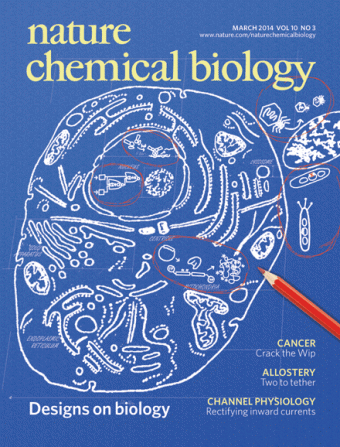Biomedical Engineer Designs a Living Cell with Second DNA Replication System
 UC Irvine’s Chang Liu has created an engineered living cell with a second DNA replication system that mutates independently of and without harming the cell’s original genome. This parallel replication cell works like a two-lane highway -- with a fast lane and a slow lane -- for direct evolution in a lab setting. With it, biomedical engineers will be able to rapidly evolve a huge array of biomolecules with custom desired functions. Liu and his research group published their work in the March issue of Nature Chemical Biology.
UC Irvine’s Chang Liu has created an engineered living cell with a second DNA replication system that mutates independently of and without harming the cell’s original genome. This parallel replication cell works like a two-lane highway -- with a fast lane and a slow lane -- for direct evolution in a lab setting. With it, biomedical engineers will be able to rapidly evolve a huge array of biomolecules with custom desired functions. Liu and his research group published their work in the March issue of Nature Chemical Biology.
“Using the evolutionary process in a bioengineering lab is historically a very inefficient endeavor because you have to constantly move DNA into and out of cells,” explains Liu, an assistant professor in biomedical engineering. “This is because high mutation rates, necessary to create enough diversity to find new function on laboratory timescales, are only available in a test tube. High mutation rates are not available inside cells. In fact, organismal mutation rates must be kept extremely low because modern organisms have large complex genomes that are easily broken by high mutation rates.”
The parallel replication system designed by Liu can be made highly error-prone without hurting the genome, and any gene encoded on the new system will undergo rapid evolution. “Genes of interest placed in the fast lane can potentially evolve thousands to millions of times faster than they would if they were encoded in the genome, or the slow lane,” says Liu.
Liu’s lab is using the new replication system to evolve special proteins that detect disease markers as well as evolve enzymes that are important to producing biofuel. They are also using it to estimate, through rapid evolution, what changes in certain targeted genes will lead to drug resistance, thereby allowing scientists to preemptively counter resistance in the field.
“This cell provides a good platform for long-term targeted evolution of genes,” says Arjun Ravikumar, a Ph.D. student in Liu’s lab who is working on refining the replication system. “Our dream project would be to take a non-functional gene and do a long-term evolution experiment to see what happens.”
